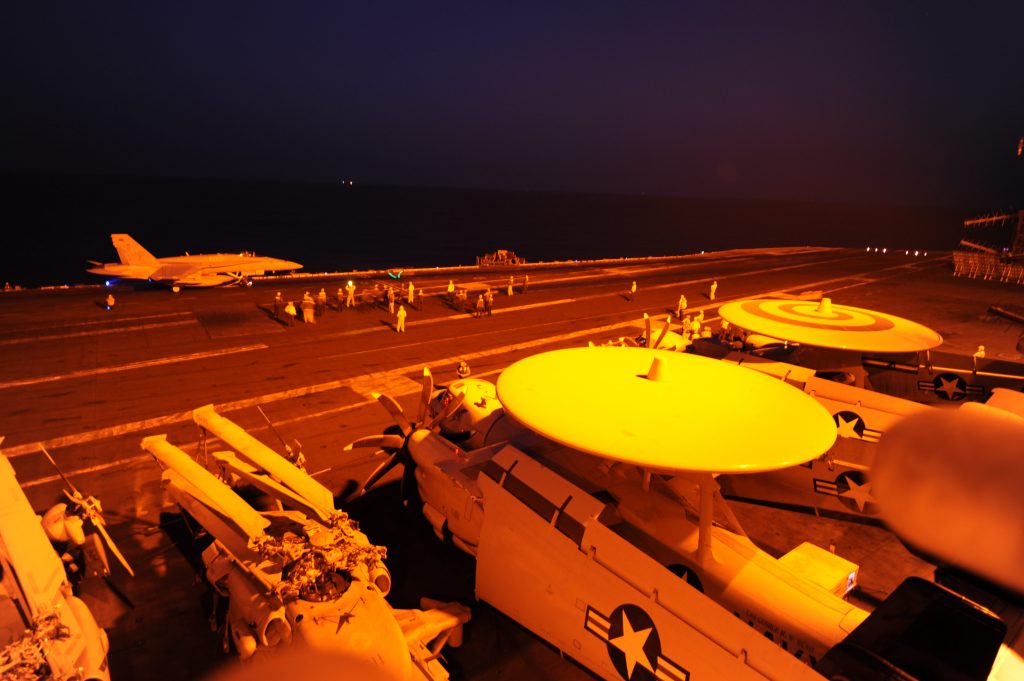 US airstrikes against ISIS have so far focused on its positions in Deir Ezzor, Hasaka, and Raqqa provinces—the latter being the capital province of the so-called Caliphate—and include Raqqa city, Tabqa, Ain Issa, Deir Ezzor city, and Tel Abyad. This attack sets into motion a series of complex, parallel developments that, depending on US follow up and whether other groups are targeted, will benefit either the regime or mainstream opposition forces.
US airstrikes against ISIS have so far focused on its positions in Deir Ezzor, Hasaka, and Raqqa provinces—the latter being the capital province of the so-called Caliphate—and include Raqqa city, Tabqa, Ain Issa, Deir Ezzor city, and Tel Abyad. This attack sets into motion a series of complex, parallel developments that, depending on US follow up and whether other groups are targeted, will benefit either the regime or mainstream opposition forces.
Thus far, it appears that there have been no US airstrikes on ISIS positions near major frontlines with the regime—though the regime may indirectly benefit on other fronts against ISIS. Given their vulnerable position and proximity, Sunni Arab rebel groups and Kurdish groups may benefit more immediately from US attacks on ISIS. Syrian rebels operate out of areas close to the targets and are susceptible to potential ISIS offensives in northern Syria, including in areas adjacent to the targeted ISIS positions. Due to the airstrikes, ISIS cannot freely move personnel or equipment westward toward Aleppo, effectively neutralizing (however temporarily) the threat to a major Syrian rebel stronghold.
There is a potentially more complex development underway: there are reports that US airstrikes have targeted fighters with the Khorasan group in northwest Syria. Khorasan is essentially embedded with Jabhat al-Nusra, albeit with a focus on transnational jihadist operations. The United States cannot hit Khorasan without effectively hitting al-Nusra. Nusra’s relationship with mainstream rebel groups is far more nuanced than ISIS’ outright hostility, constituting a major force in the anti-regime insurgency despite recent tension with some of the mainstream rebel groups. If these US strikes are a precursor to a broader air campaign against al-Nusra and/or its affiliates, this would put inter-rebel relations under enormous strain and deprive the insurgency of a potent tool against the regime. It may also further expose Aleppo, Idlib, Damascus, Quneitra, and Deraa provinces to attack from regime and ISIS forces, as al-Nusra’s forces remain integral to the defense of these regions.
Ultimately and more broadly, the net effect of this US-led air campaign will depend on the degree to which a robust, accelerated arm-and-equip program for non-jihadist opposition groups accompanies these strikes. If rebel groups receive a significant boost in support and training, they may well stand to benefit from the campaign and exploit it to improve their capability against both ISIS and the regime, while displacing Nusra and jihadist groups as the most potent and militarily effective rebel forces. It would also allow them to maintain their hold on the critical Aleppo province and their positions in Aleppo city, expand their campaign in Damascus and its surroundings, and take the offensive to ISIS in its northeastern heartland.
Faysal Itani is a resident fellow with the Atlantic Council’s Rafik Hariri Center for the Middle East.
Image: A US Navy Hornet aboard USS George H.W. Bush prepares to conduct strike missions against ISIS targets. (US Navy)
